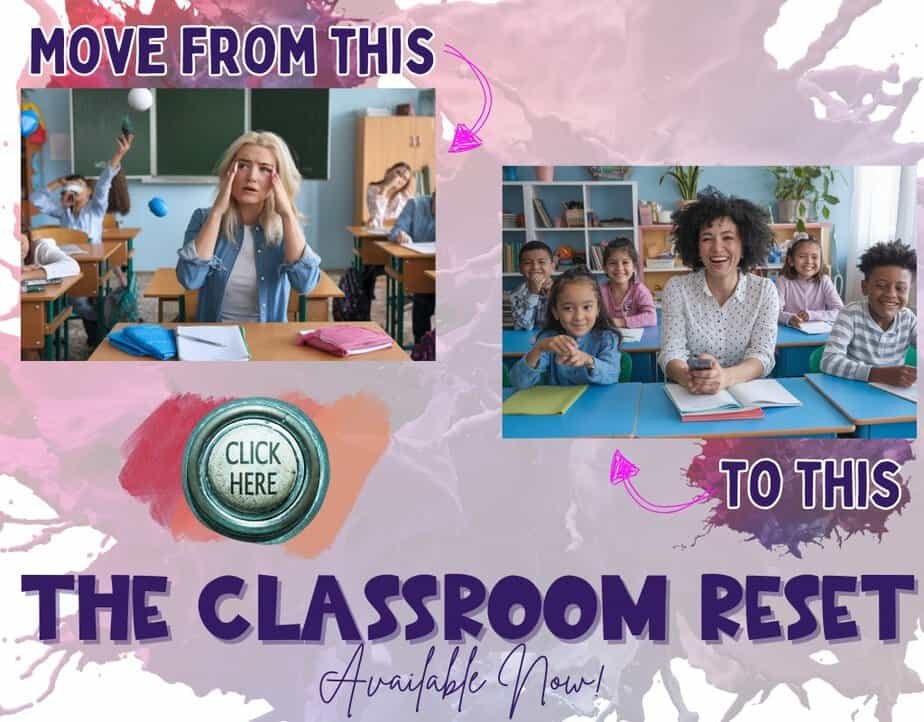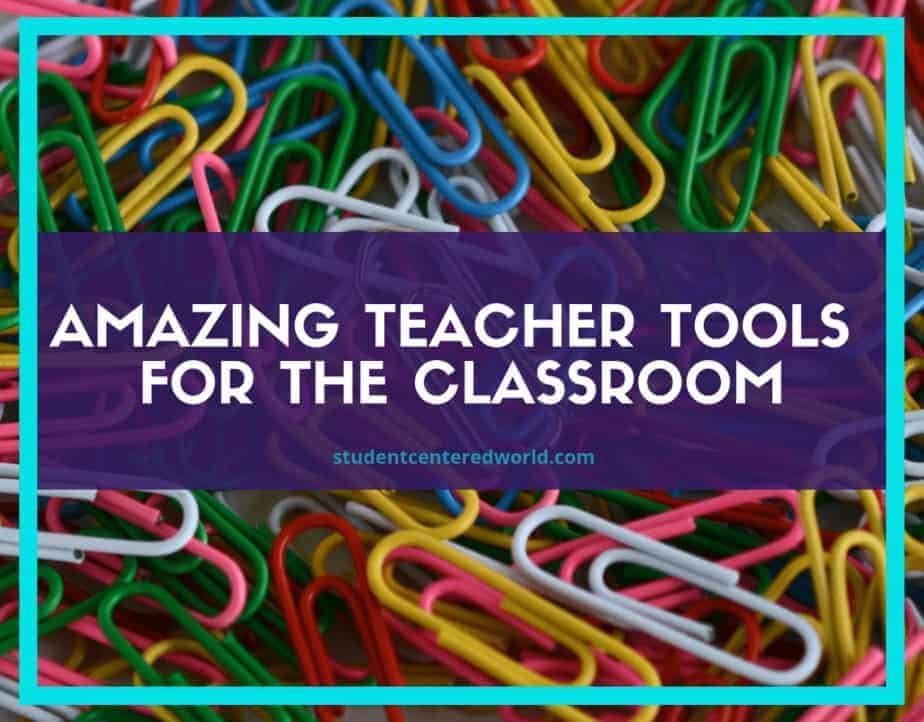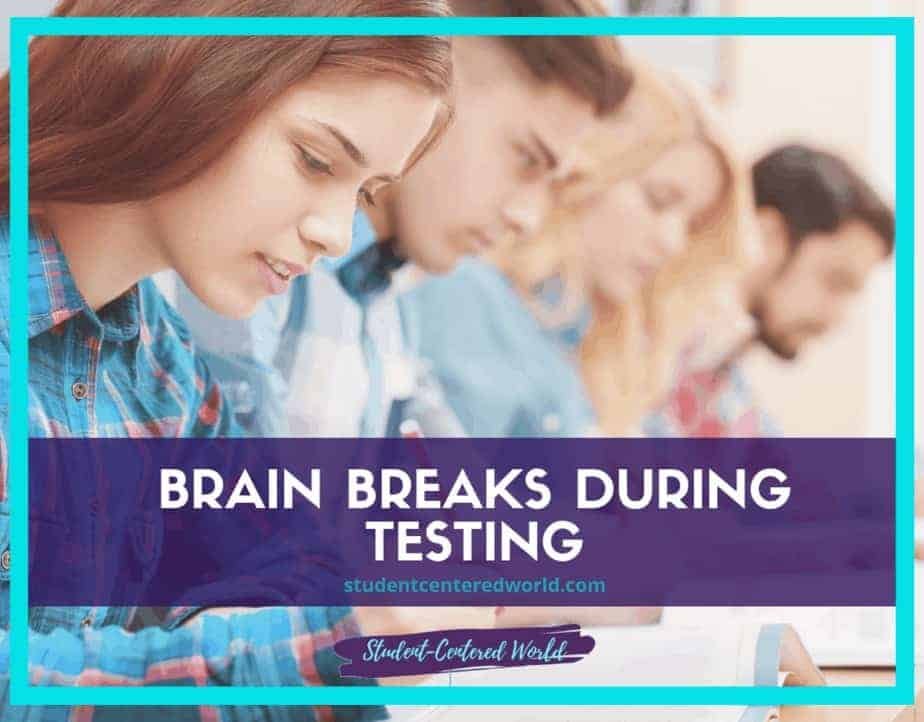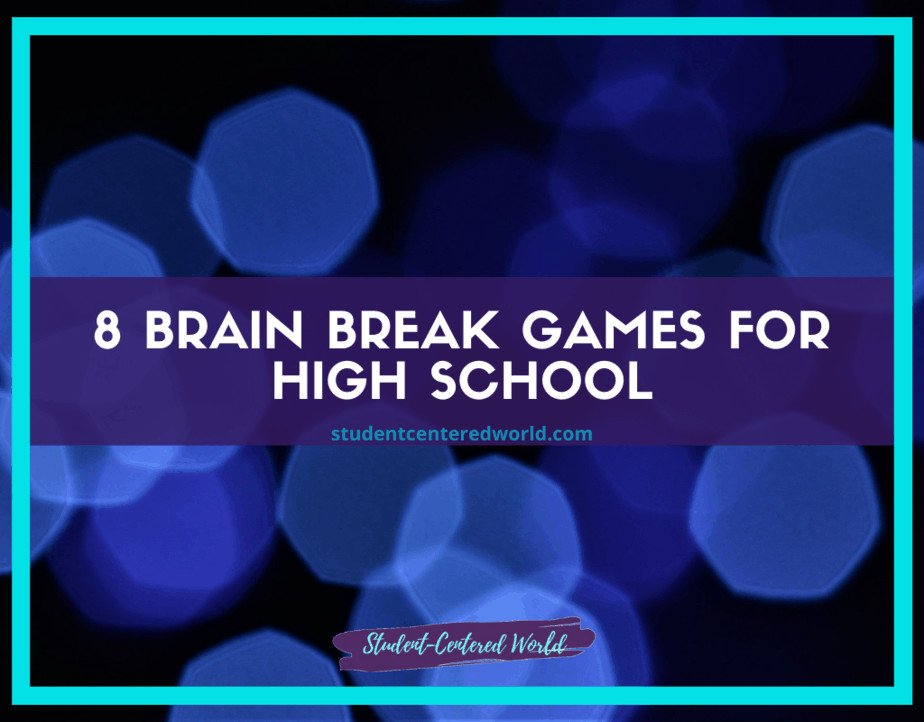Teaching Gratitude in the Classroom: Activities and Practice
From our earliest years, we’ve been taught the importance of being thankful, yet as educators, we often overlook integrating this powerful practice systematically into our teaching practices. The field of education increasingly recognizes gratitude not as a seasonal sentiment but as a foundational element for creating strong relationships, fostering positive attitudes, and enhancing academic success on a daily basis. Teaching gratitude in the classroom is so important for the mental health of both you and your students.
The Science of Gratitude: What Recent Research Reveals
A recent study published in the Journal of Happiness Studies confirms what ancient wisdom long suggested: grateful children and adults experience measurable improvements in both mental and physical health. Dr. Robert Emmons’ groundbreaking work demonstrates that when students maintain their own gratitude list for just three weeks, they show:
- 23% lower levels of cortisol (the stress hormone)
- Significant improvements in sleep quality
- Greater emotional resilience during challenges
- Increased motivation and engagement in learning
For classroom teachers, these findings represent more than good news, they offer practical, neuroscience-backed strategies to transform our school day. The positive impact compounds over time, making gratitude one of the most effective yet underutilized tools in our educational toolkit.
I also read a fascinating article that discusses how consistent gratitude will literally rewire your brain. Say what?!
In this era of teacher burnout, could this really be a simple way to change our reactions to stress?
In 2015 Dr. Robert Emmons of the University of California at Davis and Dr. Michael McCullough of the University of Miami, both psychologists, published a study that demonstrated actual physical responses the subjects had when practicing gratitude on a regular basis.
“One-third of the subjects in the study were asked to keep a daily journal of things that happened during the week for which they were grateful. Another third was asked to write down daily irritations or events that had displeased them. The last third of the group was asked to write down daily situations and events with no emphasis on either positive or negative emotional attachment. At the end of the 10-week study, each group was asked to record how they felt physically and generally about life.
The gratitude group reported feeling more optimistic and positive about their lives than the other groups. In addition, the gratitude group was more physically active and reported fewer visits to a doctor than those who wrote only about their negative experiences.“
Why Gratitude Matters Specifically in Schools
1. Building a Supportive Learning Environment
The community school model thrives when educators intentionally cultivate acts of gratitude through simple, actionable practices that seamlessly integrate into the school day. Beginning class with quick “thank you” notes where students appreciate a peer’s help, creating an interactive gratitude wall with colorful sticky notes for public acknowledgments, and thoughtfully weaving thankfulness into existing lesson plans all serve dual purposes, they take minimal instructional time while fostering the mutual respect and emotional safety that form the essential components of the gratitude experience.
These intentional practices, when implemented consistently, create a ripple effect: students who feel valued become more engaged learners, teachers report stronger classroom connections, and the entire learning environment transforms into a space where academic and social growth can truly flourish.
(This post may contain affiliate links that won’t change your price but will share some commission. As an Amazon Associate, I earn from qualifying purchases. Please read our disclosure policy for more information.)
For time-strapped educators, the good news is that gratitude integration requires no elaborate preparations or special materials, it’s about mindset shifts expressed through small, daily gestures. Whether it’s reserving the first two minutes of morning meetings for shoutouts, using exit tickets to reflect on positive things from the lesson, or designing a rotating “gratitude reporter” classroom job, these micro-interventions collectively build what researchers call the “upward spiral” of positivity.
The cumulative positive impact becomes particularly evident when examining grateful children over time, they demonstrate increased cooperation during group work, more resilience during challenges, and surprisingly, improved retention of academic material, likely because emotional security enhances cognitive processing. By making thankfulness part of the classroom routine rather than an occasional activity, teachers cultivate the optimal conditions for learning while simultaneously addressing mental health needs, a win-win scenario in today’s demanding field of education.
2. Addressing the Emotional Needs of Modern Students
With rising anxiety rates among youth, the practice of gratitude serves as an emotional anchor that provides stability in turbulent academic and social environments. Dr. Kerry Howells, a leading researcher in applied gratitude education, found measurable benefits when students express gratitude regularly: they exhibit less test anxiety, are more likely to help peers, and demonstrate significantly improved conflict resolution skills. These findings reveal gratitude’s dual role as both a protective factor against stress and a proactive builder of social-emotional competencies.
The implications of Howells’ research are particularly powerful for educators seeking practical ways to support student well-being while maintaining academic rigor. By incorporating simple gratitude exercises into the school day, whether through reflection prompts, appreciation circles, or acknowledgment rituals, teachers can help students develop these crucial life skills organically. The data confirms what many educators observe anecdotally: students who practice gratitude consistently become not just happier people, but more engaged learners and compassionate community members.
3. Teacher Well-being and Sustainability
Educators who model gratitude experience measurable benefits that enhance both their professional effectiveness and personal well-being, with research from the Journal of Positive Psychology documenting 28% lower burnout rates among teachers who consistently practice thankfulness. Beyond the data, these educators naturally cultivate stronger connections with older students, as adolescents particularly respond to authentic, positivity-focused leadership that goes beyond academic instruction to model emotional intelligence.
The ripple effects extend into educators’ personal lives, where a renewed sense of purpose emerges from recognizing their daily impact, a perspective shift powerfully reinforced by gratitude practices. Whether through maintaining a personal gratitude journal, verbally appreciating colleagues, or intentionally reflecting on small classroom victories, teachers who embody this mindset create virtuous cycles that benefit entire school communities while safeguarding their own passion for the profession.
Age-Specific Gratitude Strategies
Elementary School Techniques
Younger students thrive with concrete, tactile experiences that make gratitude tangible and engaging. Simple practices like using gratitude jars for collecting daily “happy moments,” drawing colorful “thank you” pictures for cafeteria staff and other support personnel, and incorporating storytime featuring beloved books about thankfulness all help cultivate an early attitude of gratitude.
These developmentally appropriate activities not only teach emotional awareness but also reinforce classroom community bonds, the sticky notes on a shared appreciation board or illustrated thank-you cards becoming visible testaments to the good things happening in students’ lives.
Middle School Practice
Middle schoolers thrive with a balanced blend of interactive and reflective gratitude practices tailored to their developmental needs. Hands-on activities like rotating gratitude tree bulletin boards (with student-written leaves) and weekly “Appreciation Stations” (quick thank-you prompts) provide structure, while digital options like shared Google Slide journals or class thankfulness playlists leverage their tech-savvy nature. For deeper engagement, try hybrid approaches: gratitude debates (“Is thankfulness a choice?”), cross-curricular connections (analyzing historical thank-you letters), or “Gratitude Interviews” with family members.
These methods bridge elementary’s concrete approaches and high school’s abstract reflection, transforming simple sticky notes into peer “Boomerang Thank Yous” (where receiving appreciation requires passing it on) or gratitude jars into visible “Kindness Chain” displays. Teachers find these techniques effectively channel adolescent energy into meaningful emotional growth while strengthening the classroom community.
High School Applications
Teens benefit from more reflective, intellectually engaging approaches to gratitude that respect their growing cognitive abilities. A semester-long gratitude challenge with thought-provoking journal prompts allows for deeper introspection, while research projects on the neuroscience and psychology behind the science of gratitude appeal to their analytical minds.
Social-emotional growth flourishes through peer recognition programs like “Thankful Thursday” shoutouts, where students practice publicly acknowledging each other’s good works, a practice that simultaneously builds strong relationships and develops communication skills. These methods prove particularly effective when linked to real-world applications, showing older students how gratitude operates beyond the classroom in their personal lives and future careers.
Implementing Gratitude School-Wide: A 5-Phase Approach
Phase 1: Teacher Preparation (2 weeks)
Begin by starting a personal gratitude journal to model the practice authentically. Identify natural moments in your daily routines where thankfulness can be organically incorporated. Curate age-appropriate gratitude quotes to share with students, selecting ones that will resonate with their developmental levels and experiences.
Phase 2: Classroom Integration (Month 1)
Dedicate 5 minutes in morning meetings for students to share what they’re grateful for, creating a consistent space for reflection. Create visual reminders like bulletin boards or screen savers featuring student contributions and inspirational messages. Weave thankfulness into your existing curriculum by connecting it to literature, history, or science lessons when natural opportunities arise.
Phase 3: Student Ownership (Month 2)
Train students to lead gratitude circles, empowering them to facilitate these meaningful discussions. Establish peer recognition systems where classmates can acknowledge each other’s positive contributions. Encourage personal letters of appreciation, guiding students to express gratitude to family members, staff, or community helpers.
Phase 4: Family Engagement (Month 3)
Send home “gratitude conversation starters” designed for use at the dinner table to extend the practice beyond school. Host family workshops that teach strategies for creating strong relationships through thankfulness. Showcase student good works and gratitude reflections in regular newsletters to keep families informed and involved.
Phase 5: Institutionalization (Ongoing)
Incorporate gratitude practices into staff development programs to create school-wide consistency. Measure impact through anonymous student surveys to assess emotional and academic benefits. Celebrate successes at the end of the year with recognition ceremonies or displays highlighting the program’s growth and achievements.
Overcoming Common Implementation Challenges
Challenge 1: “I don’t have time for another initiative”
The solution lies in implementing micro-practices that seamlessly integrate gratitude into existing classroom routines without requiring additional instructional time, such as pausing after attendance to have each student name one positive thing they’re experiencing, utilizing transition times between activities for quick thank-you shares where students briefly express appreciation for classmates or learning moments, and ending class sessions with “rose and thorn” reflections that allow students to share both challenges (thorns) and things they’re grateful for (roses) from the day’s lessons. These brief yet powerful practices collectively cultivate an attitude of gratitude while working within the natural rhythms of the school day.
Challenge 2: “My students think it’s cheesy”
The solution involves making gratitude relevant to students by analyzing its demonstrated role in successful people’s lives across various fields, connecting the practice directly to essential career readiness skills like emotional intelligence and teamwork that employers value, and presenting compelling recent research that quantifies gratitude’s benefits for mental health, relationships, and academic performance, thereby demonstrating its practical value beyond just being a “feel-good” exercise. This multifaceted approach helps students recognize gratitude as both a life skill and a professional asset with tangible impacts.
Challenge 3: “How do I sustain this?”
The solution involves creating sustainable systems that institutionalize gratitude practices, such as establishing monthly gratitude themes (for example, September focusing on Thankfulness for Learning) to provide structure and variety throughout the academic year, implementing cross-grade buddy thank-you programs where older and younger students regularly exchange appreciation notes or messages to build community across age groups, and forming staff gratitude partners who check in with each other weekly to maintain accountability and mutual support in practicing thankfulness, these systematic approaches ensure gratitude remains an embedded, ongoing practice rather than a one-time activity.
Measuring the Impact: Beyond Anecdotal Evidence
To effectively measure the impact of gratitude practices in schools, several quantifiable metrics can be tracked across different domains. Behavioral improvements can be assessed through reductions in disciplinary referrals, as students in gratitude-focused environments often demonstrate better emotional regulation and interpersonal skills. Academically, schools may track improvements in assignment completion rates and overall academic performance, as gratitude has been linked to increased motivation and engagement in learning.

On the social-emotional front, regular student climate surveys can provide valuable data on shifts in school culture, student well-being, and peer relationships. At the institutional level, teacher retention rates serve as an important indicator of staff satisfaction and the program’s broader impact on school climate. These metrics collectively offer a comprehensive picture of how gratitude initiatives influence various aspects of school functioning, from classroom dynamics to organizational stability. By monitoring these key indicators, administrators can make data-informed decisions about program effectiveness and areas for improvement.
Special Considerations for Different Times of Year
At the beginning of the year, set the tone by co-creating classroom gratitude norms with students to establish shared expectations. Break the ice with “Thank you for…” introduction games that help students connect while practicing appreciation. Incorporate gratitude-focused goal setting to align personal and academic aspirations with a thankful mindset.
During mid-year slumps, reinvigorate the classroom spirit with gratitude scavenger hunts that encourage students to notice and document positive moments around school. Boost morale by writing appreciation notes for staff members, fostering a culture of recognition. Reflect on past year’s accomplishments to remind students of their growth and progress.
As the end of the year approaches, have students write gratitude graduation letters to peers, teachers, or family members. Engage in legacy thank-you projects that allow students to leave a meaningful mark on the school community. Finally, inspire continuity by guiding students in “pay it forward” planning, where they design ways to welcome and support next year’s class with gratitude.
The Ripple Effect: Beyond Classroom Walls
When schools embrace gratitude as both a powerful emotion and a powerful tool, the benefits ripple far beyond classroom walls, strengthening community school partnerships through collaborative appreciation projects. This practice also transforms family dynamics at home as students naturally bring thankful mindsets to dinner table conversations, while simultaneously preparing them for students’ future workplaces where emotional intelligence and positivity are valued professional skills.
The long-term effects are profound: happier people who regularly practice gratitude consistently develop into more engaged citizens who contribute positively to society, better team players who elevate group dynamics, and resilient problem-solvers who approach challenges with perspective and creativity. These outcomes demonstrate how school-based gratitude initiatives plant seeds that blossom throughout students’ lives and communities.
Your Action Plan: Getting Started Tomorrow
- Personal Practice (5 minutes daily)
- To begin cultivating gratitude as an educator, start by creating your personal educator gratitude journal, dedicating a notebook or digital document specifically for this purpose. Make it a daily practice to identify three school-related positive things each day, whether it’s a student’s breakthrough moment, a supportive interaction with a colleague, or simply the satisfaction of a lesson well delivered…these recorded moments will serve as powerful reminders of your professional purpose and joy during challenging times.
- This simple yet transformative habit builds emotional resilience while training your mind to notice and appreciate the meaningful small victories that often go uncelebrated in the busy school environment.
- Classroom Implementation (Week 1)
- Kickstart classroom gratitude practices by introducing “Thankful Thursday” shares, designating a consistent weekly time for students to verbally express appreciation for people, experiences, or personal strengths. Complement this routine by helping students create a visual gratitude display, such as a bulletin board of handwritten notes, a digital collage, or a “kindness chain”, that grows throughout the year, making thankfulness tangible and ever-present in your learning environment.
- These paired strategies (one verbal, one visual) reinforce gratitude through multiple modalities while building a culture of recognition that students can literally see and participate in weekly.
- Professional Collaboration (Month 1)
- Amplify the impact of gratitude in your school by taking two simple but powerful actions: first, share this blog post with colleagues who might benefit from its insights, whether through email, a staff chat group, or casual conversation to spark discussion.
- Then, take the next step by preparing to propose a gratitude focus at the next staff meeting, suggesting specific ways your team could implement practices school-wide, this dual approach of sharing resources followed by formal advocacy helps transform individual inspiration into collective action while demonstrating leadership in fostering positive school culture.
- Long-Term Integration (Ongoing)
- To sustain meaningful implementation of gratitude practices, intentionally schedule quarterly check-ins on progress by marking calendar reminders for you and your team to reflect on what’s working, troubleshoot challenges, and adjust strategies, this regular rhythm maintains accountability without overwhelming daily workflows.
- Then, make success visible by taking time to celebrate milestones with your learning community, whether through certificates for participation, displays of student gratitude work, or shout-outs in newsletters, these recognition moments reinforce positive behaviors while showing students and staff their efforts matter and belong to the entire school ecosystem.
Final Thought: The Gift That Keeps Giving
As we approach the end of the school year, consider this: The great things we often remember about our favorite teachers weren’t the perfect lessons, but the ways they made us feel valued. By making gratitude a regular basis in our teaching practices, we’re not just improving test scores, we’re shaping role models, building better relationships, and nurturing grateful children who will carry this powerful practice forward.
The good news? It starts with something as simple as noticing the little things and saying thank you. In the pressured field of education, gratitude might be our most overlooked powerful tool for creating the schools, and society, we all want to see.
“Gratitude is not only the greatest of virtues, but the parent of all others.” — Cicero
Now is always a good time to begin. What’s one positive thing you’re grateful for in your classroom today? Consider one of the journals below to get your thoughts in order and move forward with the mindfulness and gratitude you deserve:
The Daily Writing Journal for Men & Women includes inspirational quotes, gratitude, journal prompts (that are short, but thought-provoking), and a spot to journal any thoughts you have at that time. It’s a nice array of blues and comes with stickers. Love it.
My favorite option is the Gratitude: A Day and Night Reflection Journal (90 Days). This one is more of a peachy/purple palate, but it breaks down a little bit for the morning in preparation for your day and a little at night to wrap up what happened. It also internally seems more manageable as it is set for 90 days.
Works Cited:
Chan, D. W. (2013). “Counting blessings versus misfortunes: Positive psychology interventions among teachers”. Journal of Psychology, 147(3), 267-288.
Davis, D. E., et al. (2016). “Thankful for the little things: A meta-analysis of gratitude interventions”. Journal of Counseling Psychology
Dickens, L. R. (2017). “Using gratitude to promote positive change: A series of meta-analyses”. Clinical Psychology Review
Emmons, Robert A., and Michael E. McCullough. “Counting Blessings Versus Burdens: An Experimental Investigation of Gratitude and Subjective Well-Being in Daily Life.” Journal of Happiness Studies, vol. 4, no. 2, 2003, pp. 157-203.
Howells, K. (2014). “Exploring the role of gratitude in the professional experience of pre-service teachers”. Teaching Education, 25(2), 149-163.
Owens, R. L., & Patterson, M. M. (2013). “Positive psychological interventions for children: A comparison of gratitude and best possible selves approaches”. Journal of Positive Psychology, 8(6), 497-507.
This article was originally published on January 10, 2020.









